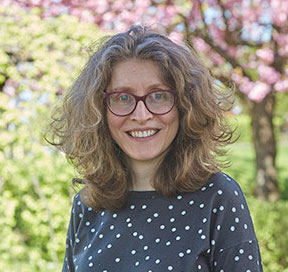
Elizabeth Duke
Lead
EMBL Hamburg
Next generation imaging for biology across scales
IMAGINE will provide technologies to probe structure and function of biological specimens in their natural context
At the core of the IMAGINE project is the development of innovative cross-scale imaging instrumentation, tools, and methods, which will advance the state-of-art of the participating pan-European RIs and show their transformative operational potential for the Life Sciences to address major socio-economic challenges of human and planetary health.
In six work packages (WPs) IMAGINE will develop instrumentation, tools and methods related to X-ray imaging (WP1), cryo-EM (WP2), super-resolution microscopy (WP3) and intravital imaging (WP4), image-based sample screening and preservation in the field (WP5). Hereby, a specific focus lies on the correlation and integrated use of all of the technologies. IMAGINE aims at making those imaging technologies sufficiently robust for service provision and allow their integration into cross-scale experiments both in terms of the specimen handling and the AI-powered data analysis and integration (WP6).

This work package focusses on using hard X-ray imaging of biological samples and aims at developing sample handling techniques and instrumentation to enable routine experiments at both room and cryogenic temperatures. A workflow will be generated for non-specialist users and deployed at different European RI’s and used for correlative imaging. The WP will explore the potential of X-ray imaging of biological matter in a near native state.
The work package is co-led by EMBL Hamburg and ESRF. Additional partners include EMBL Grenoble, Paul Scherrer Institute and ARINAX.

Lead
EMBL Hamburg

Co-Lead
ESRF

Co-Lead
ESRF
This work package focusses on electron microscopy and aims at developing new sample preparation methods, sample carriers, and integrative workflows for seamless transfer and correlative imaging between different modalities, including X-ray tomography (WP1), volume imaging, cryo-ET, and advanced LM (WP3) approaches.
The work package is co-led by EMBL Heidelberg and Max Planck Institute of Biochemistry. Additional partners include EMBL Grenoble, Arinax, Rosalind Franklin Institute, TESCAN, Leiden University Medical Centre, Leica, and ESRF.

Lead
EMBL Heidelberg

Co-Lead
Max Planck Institute of Biochemistry
WP 3 aims to establish super-resolution fluorescence microscopy to bridging physiological function to molecular structure determination. It will develop both dynamic and cryo-SRM in order to image both structure and real-time function of molecular machines in living cells. WP3 works closely with WP4 and WP2 on correlative intravital imaging and cryo-EM, and WP5 on environmental samples.
The work package is led by EMBL Heidelberg. Additional partners include KTH Royal Institute of Technology, Leiden University Medical Centre, and Leica Microsystem.

Lead
EMBL Heidelberg
This WP targets intravital imaging and its correlative use with complementary imaging technologies in WP1-3. It will develop a multi-modal volume-imaging platform to study cellular and tissue dynamics in mesoscopic and freely-moving specimens and advance correlative imaging strategies and workflows of non-transparent tissues and organisms to link dynamics to underlying (ultra-)structure. Close synergies exist with WP5 on deployment in the field, and WP6 on image restoration, real-time analysis and integration.
The work package is led by EMBL Heidelberg. Additional partners include EMBL Barcelona, EMBL Rome, Human Technopole, Centro de Ciências do Mar Algarve, and Paul Scherrer Institute.

Lead
EMBL Heidelberg

Co-Lead
EMBL Heidelberg
This work package aims at developing field platforms for high-resolution/high-throughput phenotypic imaging-based species identification coupled to automated sorting at different size scales for subsequent analyses by the novel cross-scale imaging technologies developed in WP1-4. The phenotyping will rely on AI-based image data analysis provided by WP6 and will enable for the first time acquisition of combined morphological/taxometric and molecular/ultrastructural features in single specimens collected in their environmental niches.
The work package is led by EMBL Heidelberg. Additional partners include Sorbonne University, University of Vigo, and Centro de Ciências do Mar Algarve.

Lead
EMBL Heidelberg

Co-Lead
EMBL Heidelberg
WP6 aims at developing novel image analysis solutions to allow integration of the multi-scale data output from the different technologies developed in WP1-5 and their correlative analysis. It will be driven by AI-based tools for image restoration and segmentation as well as by representation learning for microscopic and mesoscopic objects of biological interest.
The work package is co-led by EMBL Heidelberg and EMBL-EBI. Additional partners include Human Technopole and Centro de Ciências do Mar Algarve.

Lead
EMBL Heidelberg

This project is funded by the European Union (GA#101094250). Views and opinions expressed are however those of the authors only and do not necessarily reflect those of the European Union. Neither the European Union nor the granting authority can be held responsible for them.
